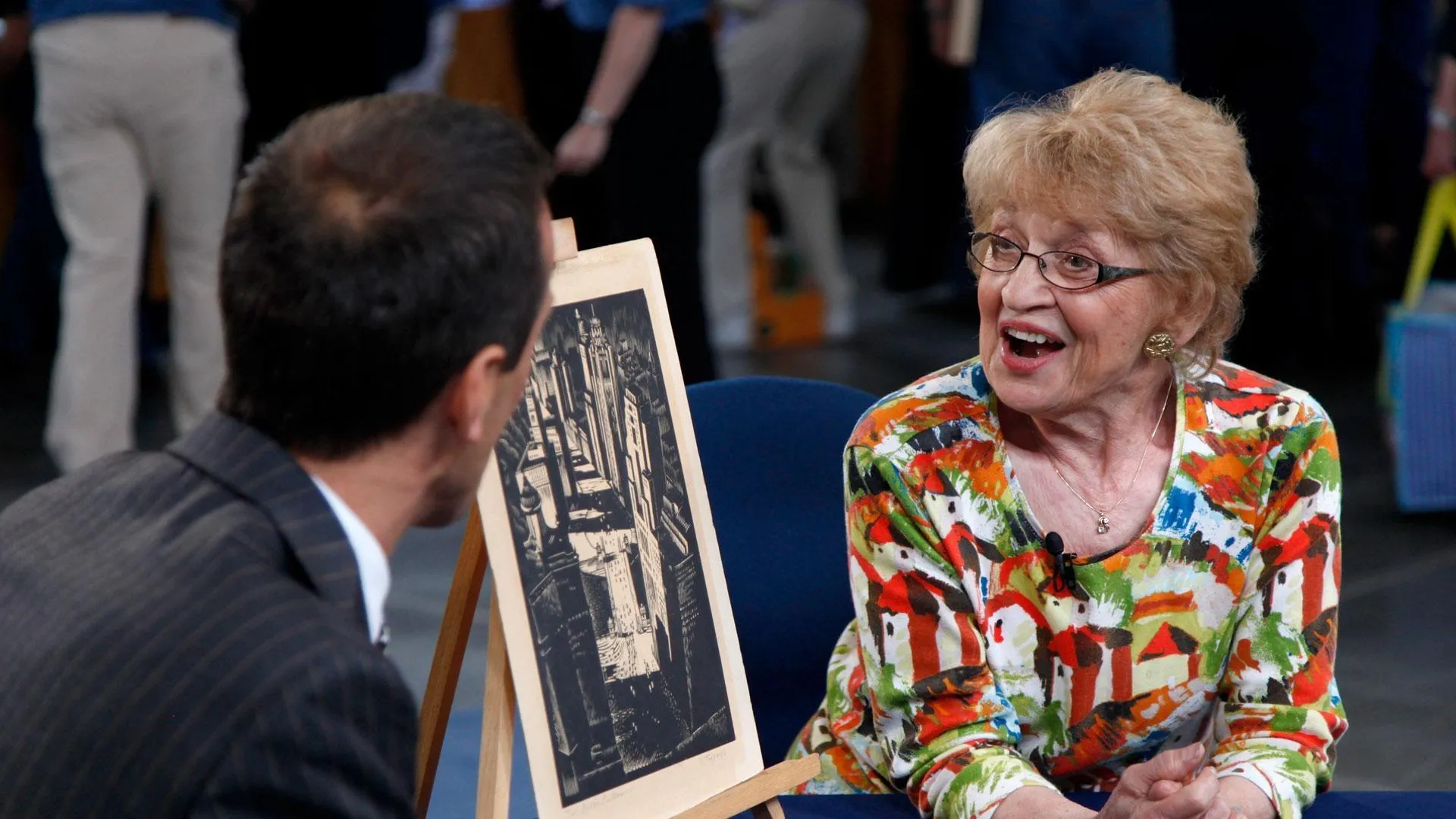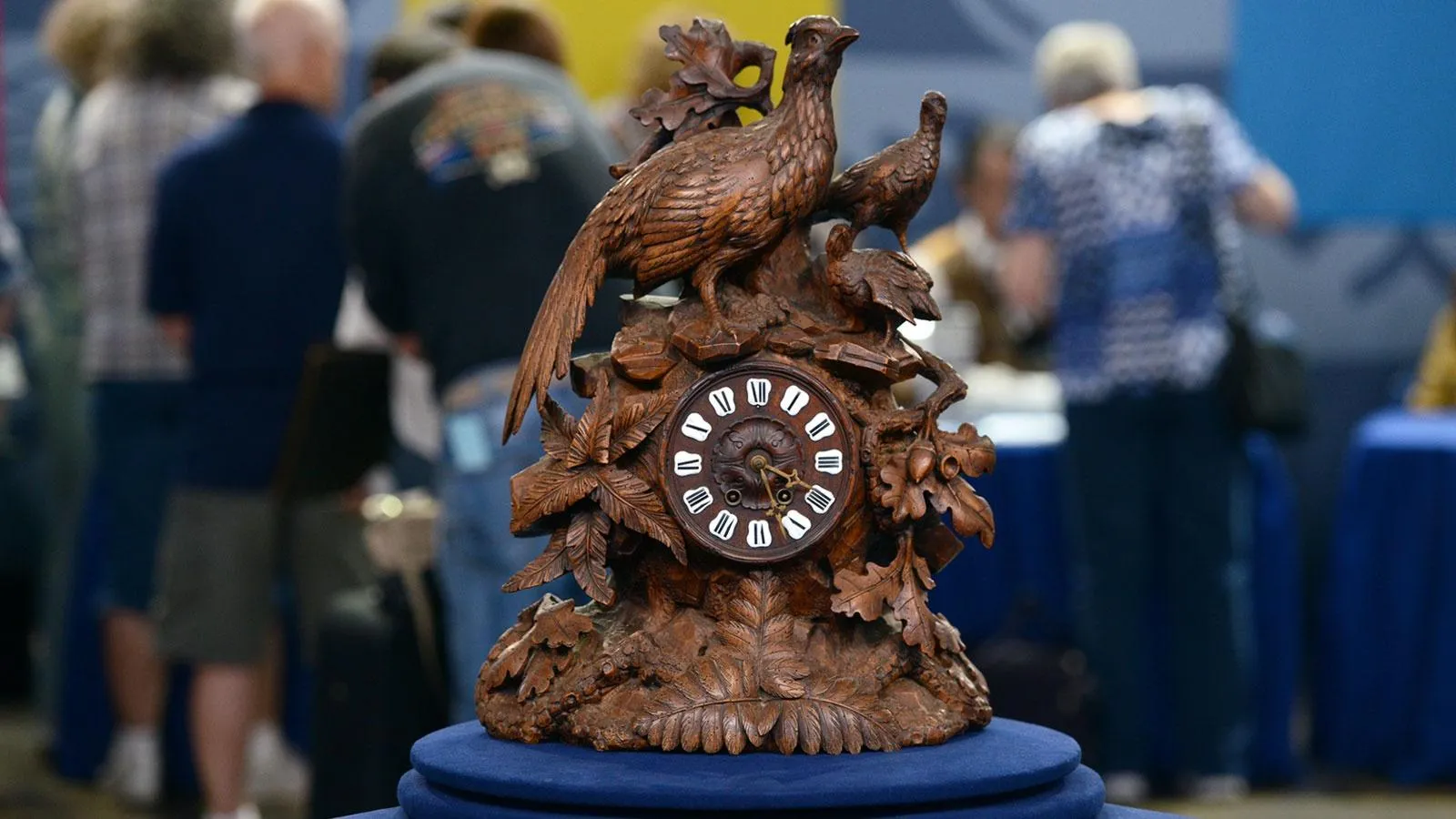GUEST: I was born on Nantucket. My grandfather's name was Jones.
APPRAISER: Was he related to Edward Coffin Jones?
GUEST: That would be probably my great-grandfather.
APPRAISER: Yeah, yeah. The Coffin name on Nantucket is, like...
GUEST: Huge.
APPRAISER: Huge.
GUEST: (laughs)
APPRAISER: And the Jones name is huge. By mid-century, Edward Coffin Jones, in New Bedford, had interests in or full ownership of 15 vessels, many of them whaling vessels. What's cool to me is that you, as a direct descendant of this great family, with Nantucket history, that these baskets, many of them have come down in the family. Right?
GUEST: I think they all have.
APPRAISER: They call these Nantucket lightship baskets, right?
GUEST: Lightship, yeah.
APPRAISER: In about 1854 or 5, they decided that they should have a lightship, right?
GUEST: Right.
APPRAISER: 25 miles off the coast.
GUEST: Mm-hmm.
APPRAISER: So that other vessels wouldn't crash...
GUEST: Into the reef.
APPRAISER: On- On the shoals of Nantucket. So these sailors had to be there, what, 24/7?
GUEST: All... Yeah.
APPRAISER: On the ship.
GUEST: On the ship.
APPRAISER: And what do you have to do out there?
GUEST: Nothing. (chuckles)
APPRAISER: So what do you do?
GUEST: Weave baskets.
APPRAISER: You weave baskets. This basket right here, for instance, is an early basket. The wooden stave coming up here with copper on the inside, the wonderful oak and ash and hickory staves. Basketmaking, of course, moved onto the island by about 1900, even the late 19th century. What you want to look for on some of the late 19th-, early 20th-century baskets are these brass staves here.
GUEST: Yes.
APPRAISER: And it's really tight. Your family has kept them in good condition. We move up in date, and as you know, this, "Antique Nantucket basket made in the 1930s by A.D. Williams" on Orange Street, Nantucket. A well-known maker who often used poplar on the bottoms. That's poplar wood. Now, this basket is missing... Did you know this? Is missing this little...
GUEST: No, I didn't know that.
APPRAISER: Right there, you can see a coup...
GUEST: Oh, you can see where there's...
APPRAISER: Yeah, little loop handles, and they're broken off.
GUEST: Mm-hmm.
APPRAISER: This basket is made by the same man, because the technique is the same. We have a poplar bottom and the original label on the bottom, which mentions 120 Orange Street. And then we have just this nice, probably early 20th century, never had handles. Condition really important. Again, all the reeds are in good shape. They're not busted off, because all that affects value. In 1945, a man named José Reyes came from the Philippines, and began making baskets, and he did something different. The earlier ones were made of oak and hickory, and ash, and he started using rattan, just like he did in the Philippines. Here's a, a very inexpensive basket, but it is signed by him and engraved. The one basket that he alone developed is the, uh, friendship basket. And this is kind of a symbol of Nantucket, right?
GUEST: Right.
APPRAISAL: He worked until 1980, right through the '50s, '60s, and '70s, and these originally sold for $15. I'll go through value and I'll start out with the most recent. This, because there's not much going on, a Reyes, at auction, is about $150 to $200. Friendship baskets, it depends what's on top. These are seagulls, that is ivory, and earlier on, they used whale bone. But that's ivory and ebony. It's a very nice rectangular shape on the bottom, and the mark is really nice. That would bring $2,500 to $4,000.
GUEST: (chuckling) Wow.
APPRAISAL: Okay? This is a nice, clean, simple basket, worth about $1,500. And this, because the handles are broken, this is about $500. It would be $1,500. Going on to this basket, that is in rough shape. A little bit on the side, it has some damages.
GUEST: Yeah, a little break in it.
APPRAISER: Yeah, and that affects value, about $1,500 because of the damage-- it would be $2,500. This, nice and early, very tight, is about $2,000 to $2,500. And finally, we get to my favorite basket. Okay?
GUEST: (laughs)
APPRAISER: This is the one I saw...
GUEST: The one you...
APPRAISER: I saw you come in with this and said, "Oh, that's the basket of my dreams." (laughs) I want to get...
GUEST: (laughs) You want to take that home.
APPRAISER: Because of its rarity, because of its condition, would be worth in the range, at auction, of $6,000 to $8,000.
GUEST: Hm.
APPRAISER: And that's, that easily, it might even bring $10,000, $11,000, $12,000, $13,000. For that one basket.
GUEST: That's a lot of money for a basket. (laughs)
APPRAISER: A lot of money for a basket.





